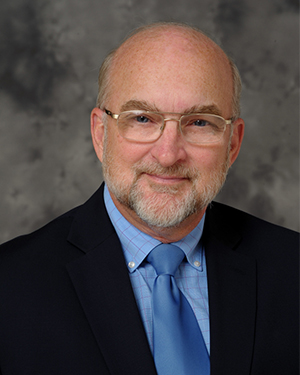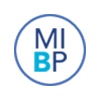|
March – April 2019
A message from Dr. William Beecroft
Depression screening and treatment are important steps to wellness
 Diagnosing depression can be a subjective process, and primary care providers may not consider making the diagnosis if patients don’t share key information with them. Patients who have had symptoms for a long time, particularly if their symptoms are physical, may not even recognize that they have a problem. These factors can lead to underdiagnosis.
Diagnosing depression can be a subjective process, and primary care providers may not consider making the diagnosis if patients don’t share key information with them. Patients who have had symptoms for a long time, particularly if their symptoms are physical, may not even recognize that they have a problem. These factors can lead to underdiagnosis.
In a given two-week period during 2013 to 2016, 8.1 percent of American adults age 20 and older had depression. And women (10.4 percent) were much more likely than men to have had depression, according to the Centers for Disease Control and Prevention.
Because there’s no biologic test or biomarker reliable enough to make a clear diagnosis of major depression, a clinical diagnosis is the best method we have.
The use of screening tools can lead to a good diagnostic impression of your patient. Screening tools are used for a variety of illnesses and can be helpful in detecting subtle symptoms of depression, as well as monitoring the progress of treatment.
It’s important to measure depression using objective evidence-based tools. Subjective assessment of a member’s mood is inaccurate and ineffective.
There are a couple of useful screening tools that are easy to administer:
- The Patient Health Questionnaire, or PHQ-9, developed by Robert Spitzer, has a substantial evidence base for specificity and sensitivity (88 percent each).1
- There’s an even quicker PHQ-2 screening tool that’s easy to administer as it only has two questions focused only on depression and not the symptoms that are often associated with depression.
Using such tools to screen patients while they’re in the waiting room can make their wait time go faster and start them thinking about their medical and mental health concerns before they see the clinical team.
There’s also the geriatrics depression scale, or GDS, that’s useful to screen for depression in geriatric patients, now defined as anyone older than 55. There are subtle differences in this population, and this screening can capture symptoms that other tools miss. It also gives the provider additional information so he or she can do a more thorough evaluation of the problem.
Clinical diagnosis
Screening tests focus on the potential diagnosis of depression. The clinical diagnosis is based on history, physical examination and available testing, using both laboratory and screening tools. Major depressive disorder has long been underdiagnosed and undertreated in our society. Generally, this is due to the subjective symptoms: one person’s normal mood is different than others. However, there are limits to normal. For example, major depression is one of several mood disorders.2
The criteria for major depression are outlined in the Diagnostic and Statistical Manual of Mental Disorders, 5th edition. If a person has five or more of the following symptoms for at least two weeks, then they likely suffer from major depression:
- Depressed mood most of the day every day
- Marked diminished interest in all, or almost all, activity most of the day nearly every day
- Significant weight loss or gain when not dieting or trying to gain weight
- Slowing of thoughts and reduction of physical movement
- Fatigue or loss of energy nearly every day
- Feeling of worthlessness or excessive guilt
- Diminished ability to think or concentrate, or being severely indecisive
- Recurrent thoughts of death, suicidal ideation with or without a plan or actual suicide attempt
Treatment
Once you’ve screened or initially diagnosed for depression, the current physician standard of care is to use your first go-to treatment and remeasure its efficacy in four to six weeks. When there isn’t a 50-percent improvement of the PHQ-9 score, you need to change interventions. An improvement of 50 percent means that patients are in remission.
The STAR-D trials of the 1980s showed the importance of changing medications and psychotherapy intervention if the treatment plan isn’t showing improvement (25 percent or less improvement) within four to six weeks.3 If the patient is on medications, that would suggest changing to a different class of medication. With psychotherapy, it would mean changing to a different style (cognitive behavioral therapy, for example) or referring the member to a psychiatrist for initiation of medication if it hasn’t already been started. More of the same intervention is bound to fail.
Remeasuring the new intervention at four to six weeks is important because if there’s no improvement (50 percent reduction, according to the PHQ-9), then the intervention would need to be changed again. Examples include:
- Changing to a different class of medication
- Adding a more vigorous diet or exercise program
- Ensuring that the member isn’t using substances
Educating patients about the importance of continuing to participate in their treatment protocol is imperative since they risk becoming fatigued from depression after 12 to 18 weeks of treatment. They may lose hope that they’ll get better.
If a patient hasn’t shown significant improvement after 12 to 18 weeks of treatment (including eight to 12 weeks of psychotherapy or cognitive behavioral therapy), you should consider consulting with a psychiatrist to review options such as pharmacologic augmentation or referral for neuromodulation. Transcranial magnetic stimulus, or TMS, is an effective treatment of individuals who aren’t responding to attempted forms of treatment.
Electroconvulsive therapy, or ECT, is also effective and done much differently today than in the past, minimizing the side effects on the memory. ECT is a first-line treatment of depression with psychosis so it doesn’t need to be considered a last resort. ECT is also very effective in geriatric patients due to the high likelihood of drug interactions and the generally frail nature of the elderly, especially when they’re severely depressed. ECT has fewer side effects than medications among this population.
Many conditions, such as diabetes, chronic pain and fibromyalgia, have significant comorbid depression. If the depression isn’t treated, the underlying medical problem is more refractory to remission and more costly overall in terms of medical spending and quality of life for the member.
Dr. William Beecroft is the medical director of behavioral health for Blue Care Network He’s a board-certified psychiatrist with added qualifications in geriatrics and psychosomatic medicine.
1 J Gen Intern Med. 2001 Sep; 16(9): 606–613. doi: 10.1046/j.1525-1497.2001.016009606.x
2 https://www.verywellmind.com/mood-disorder-1067175
3 https://www.nimh.nih.gov/funding/clinical-research/practical/stard/allmedicationlevels.shtml
Free depression screening available annuallyFree depression screening is available annually during Mental Illness Awareness Week each October. National Depressing Screening Day is an education and screening event conducted by hospitals, clinics, colleges and community groups nationwide. Information is available on the Screening for Mental Health website.
|






 Diagnosing depression can be a subjective process, and primary care providers may not consider making the diagnosis if patients don’t share key information with them. Patients who have had symptoms for a long time, particularly if their symptoms are physical, may not even recognize that they have a problem. These factors can lead to underdiagnosis.
Diagnosing depression can be a subjective process, and primary care providers may not consider making the diagnosis if patients don’t share key information with them. Patients who have had symptoms for a long time, particularly if their symptoms are physical, may not even recognize that they have a problem. These factors can lead to underdiagnosis.